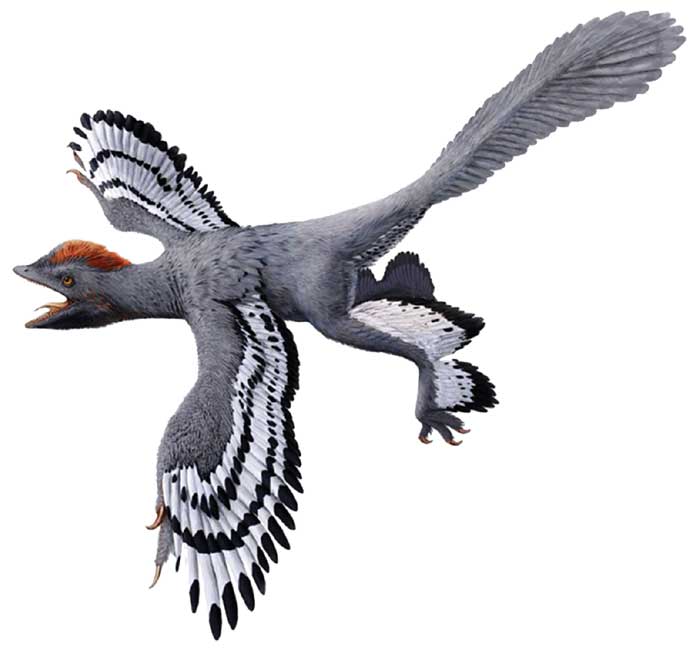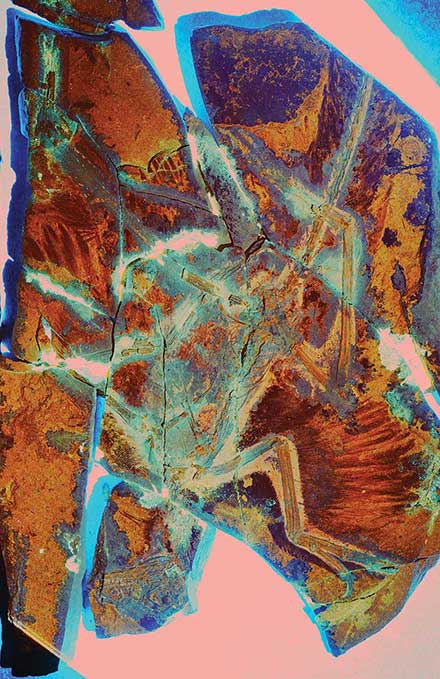
Lasers Bring Dinosaurs to Life
source:Photonics
release:Nick
keywords: Laser technique Dinosaurs
Time:2018-12-22
Most of our collective sense of what dinosaurs looked like stems from blockbuster films like “Jurassic Park.” The truth is, for years these depictions relied on artistic renderings based primarily on scant clues and what archaeologists and paleontologists surmised. Now, a group of researchers is going a step further, pointing lasers at fossils to get a better idea of what these “fleshy” creatures might have actually looked like.
Kaye uses a technique called laser-stimulated fluorescence (LSF) imaging, which harnesses the intensity of lasers to get the fossils to fluoresce. In a fossil, different types of geochemical signatures from the original tissue will cause the laser’s light to re-emit at different wavelengths, making it glow in spectacular colors.
Kaye told Photonics Media he has made trips to museums in Germany, mainland China and Hong Kong to view specimens that are mainly behind glass. If his lasers pick up something he’s interested in, he asks the curator for a closer look. He said it’s a discovery process and that he never knows what he is going to find with each specimen.
“Every difference in fluorescent color is a different geochemistry,” he said. “It’s pretty cool; we actually walk through a museum at night in the dark with the lasers. Very sci-fi.”
In a recent study, Kaye and his team pointed their lasers at the fossils of the Anchiornis — a four-winged, feathered dinosaur that is considered to be an early relative of today’s birds.

The laser images showed that the Anchiornis once had drumstick-shaped legs, a slender tail and birdlike arms. It also showed that it could have possibly been able to fly; when the laser was pointed at the “elbow” area of the wing, it lit up, meaning there was flesh there. Birdlike footpads, not visible at first glance, were also made visible with the lasers.
The LSF imaging produces colors that don’t specifically identify what the scientists are looking at; the fluorescence does, however, identify that something is different in the image, allowing paleontologists to take a closer look with more sophisticated techniques.
The lasers also allow for long-range detection out to 20 to 50 meters, giving researchers a view of the fossils or specimens from afar.
While the use of lasers on fossils is a relatively new concept, it is one that Kaye and his colleagues hope will take off, as he thinks they should be part of every paleontologists’ toolbox.
Merging futuristic sci-fi with dinosaurs sounds like a new movie genre, but in reality lasers could help preserve and accurately identify links between the prehistoric animals of the past and their successors.
Laser-stimulated fluorescence image of the four-winged bird/dinosaur Anchiornis. Complete articulated specimen preserves the soft tissue details of the skin and feathers. The skin outline is only visible under fluorescence. A 30-second time exposure with a 500-mw, 405-nm scanning laser and blocking filter was used in the study. Courtesy of Tom Kaye.
Kaye uses a technique called laser-stimulated fluorescence (LSF) imaging, which harnesses the intensity of lasers to get the fossils to fluoresce. In a fossil, different types of geochemical signatures from the original tissue will cause the laser’s light to re-emit at different wavelengths, making it glow in spectacular colors.
Kaye told Photonics Media he has made trips to museums in Germany, mainland China and Hong Kong to view specimens that are mainly behind glass. If his lasers pick up something he’s interested in, he asks the curator for a closer look. He said it’s a discovery process and that he never knows what he is going to find with each specimen.
“Every difference in fluorescent color is a different geochemistry,” he said. “It’s pretty cool; we actually walk through a museum at night in the dark with the lasers. Very sci-fi.”
In a recent study, Kaye and his team pointed their lasers at the fossils of the Anchiornis — a four-winged, feathered dinosaur that is considered to be an early relative of today’s birds.

Revised artist’s rendition of Anchiornis using the new body outline laser-stimulated fluorescence data. Courtesy of Julius T. Csotonyi.
The laser images showed that the Anchiornis once had drumstick-shaped legs, a slender tail and birdlike arms. It also showed that it could have possibly been able to fly; when the laser was pointed at the “elbow” area of the wing, it lit up, meaning there was flesh there. Birdlike footpads, not visible at first glance, were also made visible with the lasers.
The LSF imaging produces colors that don’t specifically identify what the scientists are looking at; the fluorescence does, however, identify that something is different in the image, allowing paleontologists to take a closer look with more sophisticated techniques.
The lasers also allow for long-range detection out to 20 to 50 meters, giving researchers a view of the fossils or specimens from afar.
While the use of lasers on fossils is a relatively new concept, it is one that Kaye and his colleagues hope will take off, as he thinks they should be part of every paleontologists’ toolbox.
Merging futuristic sci-fi with dinosaurs sounds like a new movie genre, but in reality lasers could help preserve and accurately identify links between the prehistoric animals of the past and their successors.
MOST READ
- RoboSense is to Produce the First Chinese Multi-beam LiDAR
- China is to Accelerate the Development of Laser Hardening Application
- Han’s Laser Buys Canadian Fiber Specialist CorActive
- SPI Lasers continues it expansion in China, appointing a dedicated Sales Director
- Laser Coating Removal Robot for Aircraft
PRODUCTS
 FISBA exhibits Customized Solutions for Minimally Invasive Medical Endoscopic Devices at COMPAMED in
FISBA exhibits Customized Solutions for Minimally Invasive Medical Endoscopic Devices at COMPAMED in New Active Alignment System for the Coupling of Photonic Structures to Fiber Arrays
New Active Alignment System for the Coupling of Photonic Structures to Fiber Arrays A new industrial compression module by Amplitude
A new industrial compression module by Amplitude Menhir Photonics Introduces the MENHIR-1550 The Industry's First Turnkey Femtosecond Laser of
Menhir Photonics Introduces the MENHIR-1550 The Industry's First Turnkey Femtosecond Laser of Shenzhen DNE Laser introduced new generation D-FAST cutting machine (12000 W)
more>>
Shenzhen DNE Laser introduced new generation D-FAST cutting machine (12000 W)
more>>

